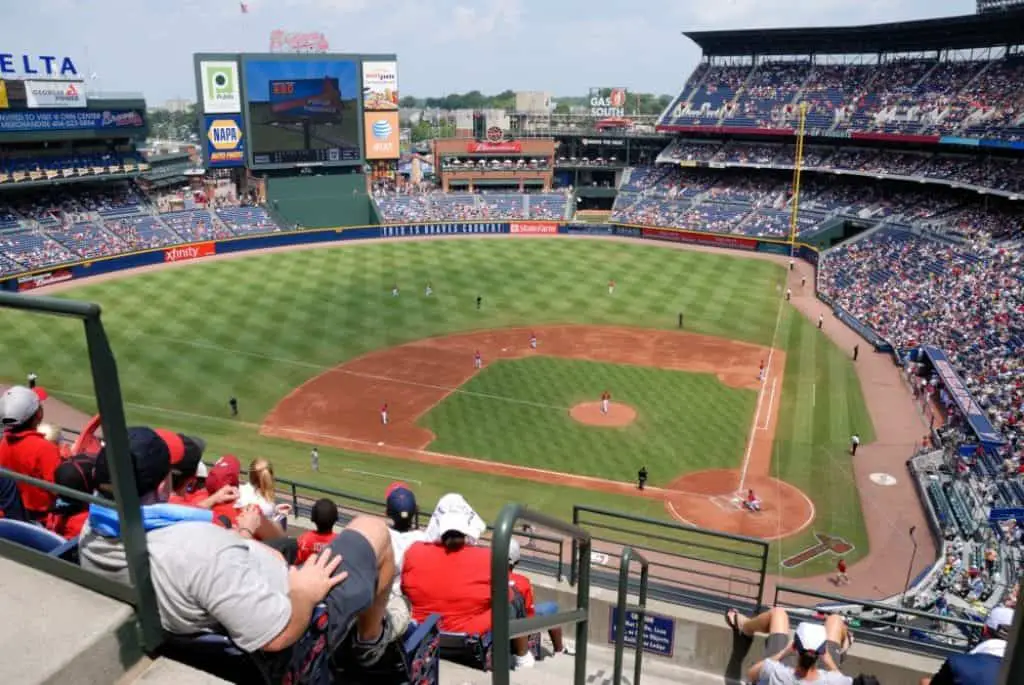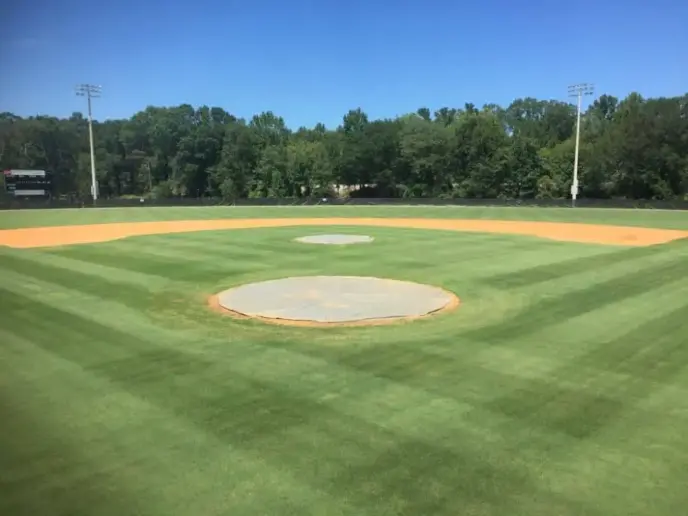How Many Acres Are In A Baseball Field? (Solved!)
Baseball, seemingly more than any other major sport, is based on firm rules and regulations.
The official baseball rulebook is 250- pages long standardizing every aspect of the game to the tiniest details.
However, there’s one thing that escapes strict regulations – the size of a baseball field. This is one of the main differences between baseball and other professional sports.
In all other sports, the playing surface is standardized and the same, no matter where the game is played.
On the other hand, when it comes to baseball no two fields are the same size.
So, the answer to the question of how many acres are in a baseball field is anything but simple.
It would have to take into account many different factors that determine the size of baseball fields and even then it wouldn’t be totally precise due to the variation in how each ballpark is designed.
So, let’s find out in this article!
Table of Contents
How Many Acres Are In A Baseball Field?

As you dig deeper trying to figure out how big baseball fields are in acres, things get even more complicated.
In addition to unstandardized professional baseball fields, there are also different maximum dimensions for ballparks on the lower and youth levels of competition.
Professional Baseball Fields (4.5 Acres)
Still, for each of these competition levels, we can estimate the average size of the baseball field based on the most common dimensions.
At the professional level of baseball, in the MLB and minor leagues, basepaths are 90 feet long.
In addition, the minimum distance between the home plate and the nearest fence in the center field is 400 feet.
The nearest fence in the left and right field is 325 feet from the home plate. These baseball fields are approximately 4.5 acres in size.
High school and college baseball fields are about the same size as those in professional leagues.
Little League Baseball Fields (1.5 Acres)
The fields in the Little League are much smaller than in the pros, which is logical as they’re built for kids.
The base-to-base distance in the Little league is 60 feet.
Little League fields often don’t have fences, but, per rules, the nearest fence or any other obstruction in the center field such as a stand, is 215 feet away from the home plate.
This puts the overall size of the Little League baseball field at around 1.5 acres.
Other Youth Leagues Baseball Fields (2.0 Acres)
Besides Little League, there are numerous other youth leagues being played all over the country, such as Pony League.
Often, they will have 70-feet basepaths and the center field fence 275 feet removed for the home plate.
For those fields, the overall size is approximately 2.0 acres.
How To Measure A Baseball Field?

The first thing to do is measure basepaths. You should start at the white tip and finish measuring at the back of the home plate.
After this, measure the distance from the back corner of the 1st base to the center of the 2nd base. Repeat this between the 2nd and 3rd, and go back to the home plate.
Once you’re finished with basepaths, measure the distance between the outfield fence and the back of the home plate.
You can use any point of the fence for this measurement.
Remembering that the diameter of the batting circle is 5 feet, measure base cutouts from the base’s back corner nearest to the foul line, but the farthest from the home plate.
The height of the pitcher mound is determined based on the overall size of the field. It can be 4 to 10 feet depending on the length of the basepaths.
What Is The Biggest Baseball Field?
The dimension of baseball fields in the MLB is decided by various factors, including where it’s built and the overall size of the stadium.
It’s important to understand that the size of the field is not just for show.
A lot of teams build their rosters and organize their strategies around the strengths and weaknesses of their fields.
For example, New York Yankees and Texas Rangers have a tradition of recruiting big hitters and ground-ball pitchers as their stadiums support a bevy of long balls.
So, some fields are more hitter-friendly, while others favor the defense.
List Of The Stadiums With The Biggest Field In The MLB
Below is the list of Major League stadiums sorted by the size of the field, or, to be more precise the distance between the center field fence and home plate.
You’ll notice that this list is rather different from the one featuring the overall size of the stadiums or crowd capacity.
- Comerica Park, Detroit, Michigan, Detroit Tigers, 420 feet
- Coors Field. Denver, Colorado, Colorado Rockies. 415 feet
- Kauffman Stadium. Kansas City, Missouri, Kansas City Royals, 410 feet
- Oriole Park at Camden Yards, Baltimore, Maryland, Baltimore Orioles, 410 feet
- Progressive Field, Cleveland, Ohio, Cleveland Guardians, 410 feet
What Is The Smallest Baseball Field?
Most baseball fans already know that the list of the smallest baseball fields is led by legendary Fenway Park, home of the Boston Red Sox.
Designed like that out of necessity, due to the lack of real estate space in the area surrounding the stadium, the field at Fenway Park is the most unique in all of MLB.
Below, you’ll find the top 5 stadiums with the smallest fields in the league.
- Fenway Park, Boston, Massachusetts, Boston Red Sox, 390 feet
- Oracle Park, San Francisco, California, San Francisco Giants, 391 feet
- Dodger Stadium, Los Angeles, California, Los Angeles Dodger, 395 feet
- Petco Park, San Diego, California, San Diego Padres, 396 feet
- Angel Stadium, Anaheim, California, Los Angeles Angels, 396 feet
Conclusion
The different sizes and various unique features and quirks of each baseball field are a big part of what makes the game so interesting and beautiful.
Unlike the uniformity in other major sports, baseball teams have plenty of freedom when designing their fields, which most look to use to their advantage.
The fact that each team has a field of different sizes adds to the home advantage and helps them win games in front of their own fans.
However, it also makes it a bit difficult to get a general picture of how big the baseball fields are.
Still, even with all their different dimensions and unique details, we can safely say that most pro baseball fields spread across around 4.5 acres.




